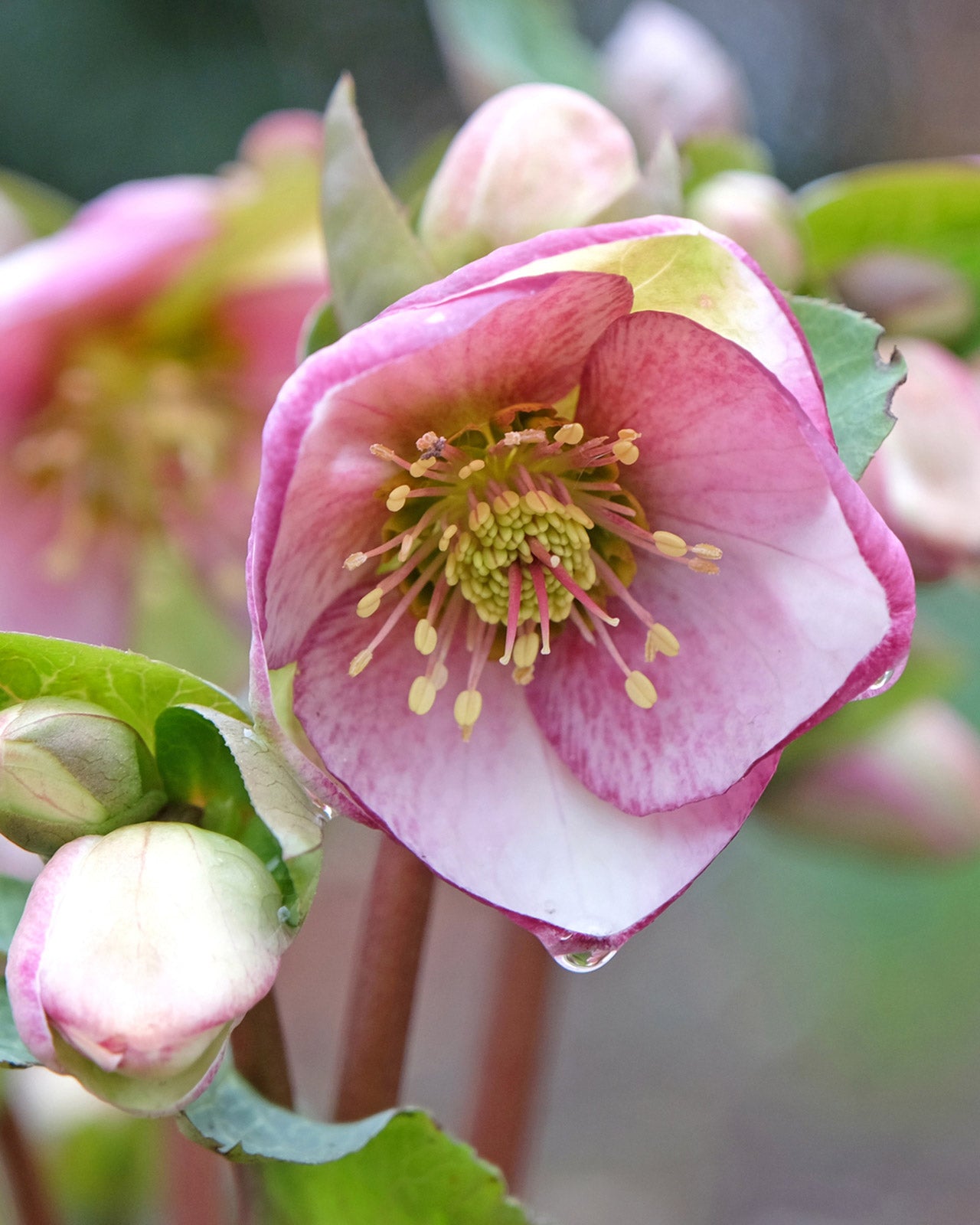

-
Why we like this plant
Helleborus × hybridus is an essential plant for winter and early spring gardens, providing colour when little else is in bloom. Its shade tolerance, evergreen foliage, and resilience make it an invaluable addition to woodland borders and underplanting schemes.
-
About this plant
Helleborus × hybridus, commonly known as the Lenten Rose, is a stunning and reliable perennial that thrives in shady gardens. Flowering from late winter into early spring, it produces cup-shaped, nodding blooms in shades of white, pink, red, purple, and even speckled or double varieties. The leathery, deep green foliage remains evergreen, adding year-round interest. Highly resistant to cold temperatures and deer-resistant, this hellebore is perfect for woodland borders, underplanting shrubs, and adding much-needed colour during the darker months. It is also an excellent early nectar source for bees and pollinators.
-
Key features
- Early flowering from late winter to spring
- Elegant nodding blooms in a wide range of colours
- Evergreen, deeply cut foliage for year-round interest
- Thrives in shade and under trees
- Attracts early pollinators
-

Height and
spread -

Growth
habitClump-forming, spreading
-

Moisture
Prefers consistent moisture but avoids waterlogged soil
-

Position in
the GardenWoodland gardens, shady borders, under shrubs and trees
Planting guide
- Plant in well-drained, humus-rich soil
- Position in partial to full shade for best results
- Space plants around 30-45cm apart to allow for spreading
- Best planted in autumn or early spring
Care tips
- Remove old leaves in late winter to showcase fresh growth and flowers
- Water during dry spells, especially in the first year
- Apply a mulch of compost or leaf mould in autumn
- Divide clumps in early spring if overcrowded
- Wear gloves when handling, as sap may cause skin irritation
Winter care
- Fully hardy and withstands frost
- Mulch lightly in autumn to enrich the soil
- Cut back any damaged leaves in late winter











